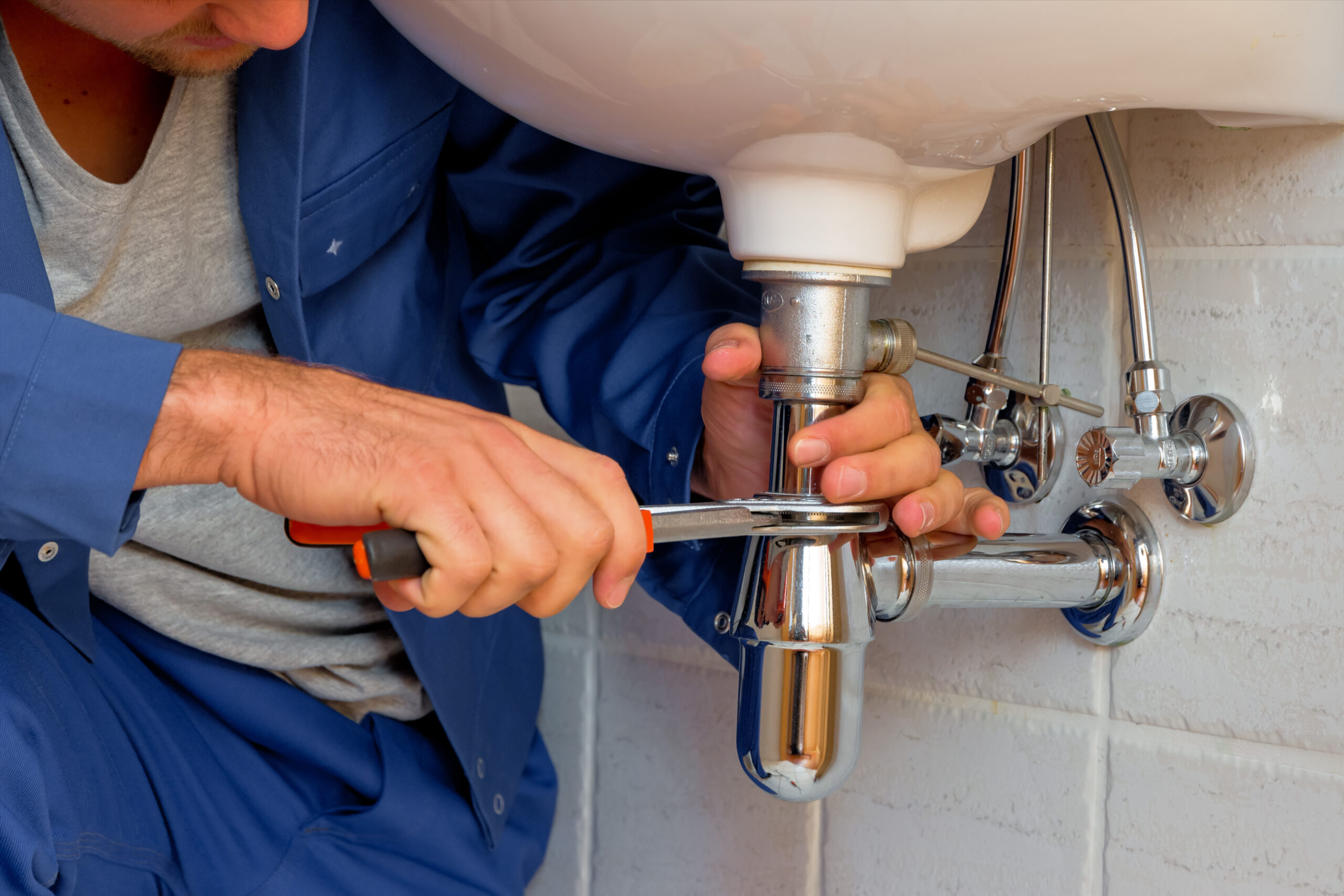Living in a house comes with numerous responsibilities, and perhaps one of the most overlooked yet critical ones is maintaining the plumbing system. After all, who wants to be bothered by that constant water dripping or walking into a bathroom flooded due to inadequate drainage?
But for many people, plumbing maintenance and repair is too intimidating. There is also the fear of repairing something and worsening it. However, before you rush to call a plumber or make some bad DIY choice, you might want to take a look at these plumbing secrets that can save you time and money.
Key Takeaways
- It’s important to know where you water shut off valve is in your home, as this can save you from more serious damage when plumbing issues occur.
- Although a popular solution for dealing with clogged drains, chemical drain cleaner can cause irreversible damage to your plumbing.
- Having DIY plumbing essentials like caulk, plumbers tape, and plumbers dope can help you make a variety of cost-effective repairs on your own.
- Addressing smaller issues like slow drains early one can help you diagnose potentially more significant issues before they become a costly repair
Check Your Water Meter for Leaks
One of the best ways to detect if there’s a leak in your system is by checking your water meter. For this, you’ll need to turn off all water sources in your home – this includes faucets, washing machines, dishwashers, and any other appliance that uses water. Once everything is turned off, take a look at your water meter.
If the meter continues to move, it’s likely that you have a leak somewhere in your system. This method won’t tell you where the leak originates, but it’s a good first step toward identifying a problem. A continued movement on your water meter when all water sources are turned off is a clear red flag that needs immediate attention.
Don’t Ignore Slower Drains
Many people tend to ignore slower drains until they become completely blocked. However, slow drains are often an early warning sign of a larger issue. It could indicate a blockage in the making, a problem with your sewer line, or even tree roots infiltrating your pipes.

Instead of waiting for the drain to become completely blocked, take action as soon as you notice a slowdown. You can try numerous DIY methods, like using a plunger or a plumber’s snake. If these don’t work, it may be time to call in a professional. Ignoring the issue could lead to more serious and expensive problems down the line.
Know Where Your Main Water Shutoff Valve Is
Knowing where your main water shutoff valve is can save you from potential water damage in case of a major leak or plumbing disaster. The valve’s location varies depending on your home, but it’s usually located in basements, crawlspaces, or near the water heater.
Ensure every household adult knows where the shutoff valve is and how to use it. In the event of a serious leak, quickly turning off your home’s water supply can minimize damage and give you peace of mind while you wait for a plumber to arrive.
Drain Cleaner is a No-No
It’s a popular notion that chemical drain cleaners are the ultimate solution for clogged drains – a notion that couldn’t be further from the truth.

While they may provide temporary relief, these products are packed with harsh chemicals that adversely affect your pipes in the long run. The chemicals can corrode the inner lining of the pipes, leading to weakened structures, leaks, and even pipe bursts.
Moreover, the environmental implications of these chemicals are significant. They can seep into groundwater and contaminate it, posing risks to local ecosystems. The price of these potential damages far outweighs the cost of any short-term convenience these cleaners may provide.
Instead, reach for a plunger or a plumber’s snake to dislodge the clog. These tools can effectively clear blockages without causing any damage to your pipes. If these methods don’t work, don’t hesitate to call a professional.
Also, remember that prevention is always better than cure. Avoid pouring grease, oil, or any solid waste down your drains, as they can solidify and cause blockages.
Avoid Over-Tightening Valves and Tube Fittings
When it comes to dealing with valves, faucets, or pipe fittings, many homeowners subscribe to the “tighter is better” philosophy. However, over-tightening can lead to many problems, including stripped screws and broken bolts, resulting in leaks or even water damage. This common mistake in DIY plumbing projects can turn a minor repair into a costly endeavor.
Instead, strive for a snug fit. The fitting should be tight enough to prevent leaks but not so tight that it puts undue stress on the hardware. A good rule of thumb is to hand-tighten plus a quarter turn with a wrench. This should ensure a good seal without damaging the fitting or the pipe.
Remember, if a leak occurs, it’s easier (and usually cheaper) to tighten a fitting than to replace a broken one.
Always Have Some Plumber’s Tape Nearby
Plumber’s tape, or Teflon or thread seal tape, is a must-have tool for every homeowner. It creates watertight seals at pipe threads, preventing leaks at joints and connections. The tape fills in gaps between the threads, ensuring a secure and tight seal.

Before attaching any fittings, take a moment to wrap a few layers of plumber’s tape around the threads in a clockwise direction. Make sure the tape covers all the threads and is wrapped tightly. This simple yet crucial step can save you from dealing with annoying leaks down the line.
Having a plumber’s tape at hand can help you tackle minor leaks yourself, saving you time and potentially money on calling out a plumber for a simple job. However, remember that for larger issues, professional help is always recommended.
Install Pipe Insulation to Prevent Sprayer Snags
Sink sprayers can be highly convenient but can also become frustrating when they fail to extend fully or get stuck. This common issue often occurs when the sprayer hose gets snagged on the shutoff valves. To prevent this from happening, consider installing pipe insulation.

Foam pipe insulation, which is readily available and easily cut to size, can act as a cushion between your sprayer hose and the valves. By preventing direct contact, you eliminate the chance of snags. The installation process is straightforward – measure the length needed, cut the insulation accordingly, and wrap it securely around the valve.
But the benefits of pipe insulation extend beyond just preventing sprayer snags. It can also reduce heat loss from your hot water pipes.
Keeping your hot water pipes insulated minimizes the energy required to heat the water, thus saving on your energy bills. Plus, during colder months, pipe insulation can help prevent your pipes from freezing and bursting – a situation that can lead to costly repairs.
Use Caulk Instead of Putty
When it comes to sealing fixtures like faucets, many DIY enthusiasts instinctively reach for a plumber’s putty. But there’s an alternative that might serve you better – silicone caulk.
While a plumber’s putty creates a strong seal, it has its drawbacks. It can stain certain surfaces, and it’s not recommended for specific materials like plastic or granite due to potential compatibility issues. Over time, putty can also dry out and crack, leading to leaks.
Silicone caulk offers a superior alternative in many instances. Unlike putty, it forms a waterproof seal that won’t stain or damage surfaces. Moreover, silicone caulk is more flexible than putty. This flexibility allows it to accommodate slight shifts or movements without breaking the seal, providing a more durable and long-lasting solution.
Just remember to let the caulk cure completely according to the manufacturer’s instructions before exposing it to water to ensure the best results.
Dope Everything
“Doping” in plumbing refers to applying pipe dope, or pipe joint compound, to the threads of plumbing connections before they’re screwed together. It might seem like an odd term, but it’s essential to ensure tight, leak-free connections.
Pipe dope acts as a lubricant, making it easier to tighten fittings. More importantly, it fills in any gaps between the threads, creating a seal that prevents leaks. Therefore, applying pipe dope to every threaded connection you make is good practice – not just those on your water supply lines. This practice should extend to gas, drain, and threaded electrical connections.
By doping all your connections, you’re taking a proactive approach to preventing potential leaks. This simple act can save you from future headaches and costly water damage repairs.
Remember, while these tips can help you handle minor plumbing tasks, don’t hesitate to call in a professional for more complex jobs. Plumbing can be intricate work, and a small mistake can lead to significant problems.
Know When It’s Time to Call a Professional
DIY plumbing can be rewarding if done correctly, and there are definitely ways for homeowners to save money by taking on minor plumbing jobs themselves. However, it’s important to recognize the limitations of DIY skills and know when it’s time to call in a professional.

When you need a professional plumber, trust the experts at Sierra to get the job done right. Sierra’s experienced plumbing technicians have the knowledge and expertise to handle everything from a simple leaky faucet to major sewer line repairs. Contact Sierra today for all your plumbing needs.




